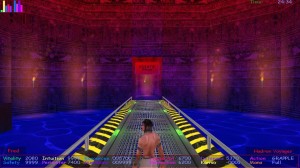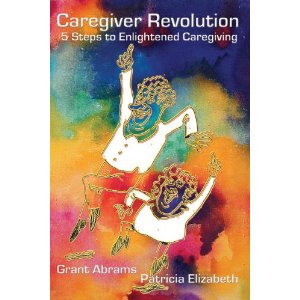Dedicating Efforts

A scene from Hadron Voyager
When you are in the virtual environment and you are running through the “game,” you can dedicate that run to the benefit of another. Dedicating an effort or activity, such as an orb run, to the benefit of another being is essentially the same as doing a reading. As we are doing that particular activity we “keep the person in mind” as we pursue the activity. We do this in whatever way that works best for us. Suggestions for how to do this more effectively are given here. We may want to have a picture of the individual on hand. We may have his or her name, location or birth date written on a piece of paper. But somehow we try to remember that this particular effort includes his or her benefit. Some day we will be able to dedicate much more sustained efforts to the benefit of others, but for now, shorter, focused bursts of good intention are what we’re working with.
My angle in approaching all of this is from the caregiving or working-with-the-elderly viewpoint. A major problem of caregiving is that many of the elderly, once they become unable to maintain an active lifestyle, become unhappy and depressed. Their kids (generally) suffer as a result and are looking for things they can do to alleviate their parents’ suffering.

Doing readings or running orbs can actually help, but the caregivers have to be of the ilk to give it a try and put some effort into it. They can run an orb and dedicate it to their loved one. If they run the orb in the presence of their parent or loved one it will have even better result. Some folks may more readily do orb runs than readings, so here before us opens another path of service for others and ourselves.

Not all elderly who are infirm or less active are unhappy. In fact many are doing just fine. Their kids benefit from this. Its absolutely astounding how much difference attitude makes. A good attitude lasts right up to the very end.
Here is how you start if you want to run an orb for the benefit of another:
If you have the Caregiver Insta Fix CD, simply insert it into your CD drive and it will automatically start the game. Use your arrow keys or RIGHT Mouse button to move your character.
If you don’t have the CD:
- Download an orb.
- Visit Prosperity Path Remedies page
- Select an orb of your choice. Whether you use your intuition or common sense to select an orb — you cant go wrong.
- Navigate to the page for the orb of your choice.
- You simply press the download button on the page. (Typically just right of the title).
- You will be directed to a paypal page where you must pay a download fee of 99 cents. (This covers the download fee that we have to pay the company, prosperity in itself is free – (we just can’t pay the bill if a million people decides to download our games)
- If you don’t have a paypal account you can choose “DONT HAVE A PAYPAL ACCOUNT” and pay with your credit card as you normally would.
- You should now be directed to a download page. And, if you have given a corect email address, you will also receive an email which contain a link to the download.
- Click on the download link.
- Save the download on your computer. Please remember where you save the download to.
- Install the game.
- When you have downloaded the game you will find it in the folder you have either choosen or it will most likely be in the download folder, if you cant find it and have windows 7 or vista you can make a search by clicking the blue windows tab in the left corner in the bottom and write the name of the game in the searchbox.
- When you have found the game you click on it or choose the command open and the file will start installation.
- Follow the instructions in the installer and it should be pretty darn simple.
- You might get a message from Windows suggesting that “Windovs is not certain that this program is installed correctly.” This is not a problem, the game will have installed correctly. This is fine. Just click “The software installed correctly.”
- Play the game.
- Double click the icon on your desktop to start the game. It is okay to allow the game to make changes.
- You will be asked to enter your name. Please do.
- Click okay, go, do it, play, or whatever buttons pop up next.
- You will now be in the game.





